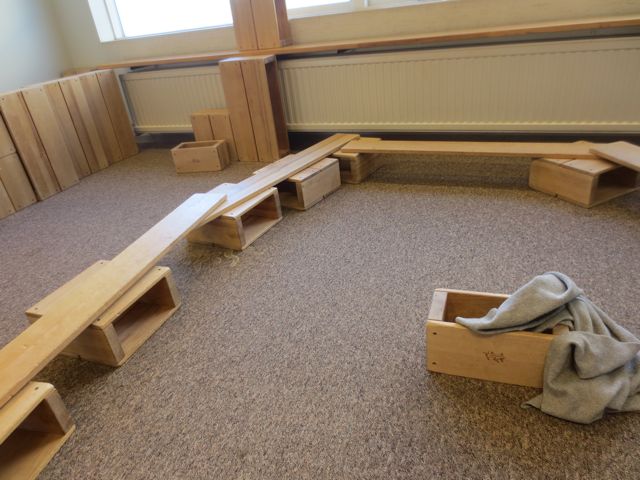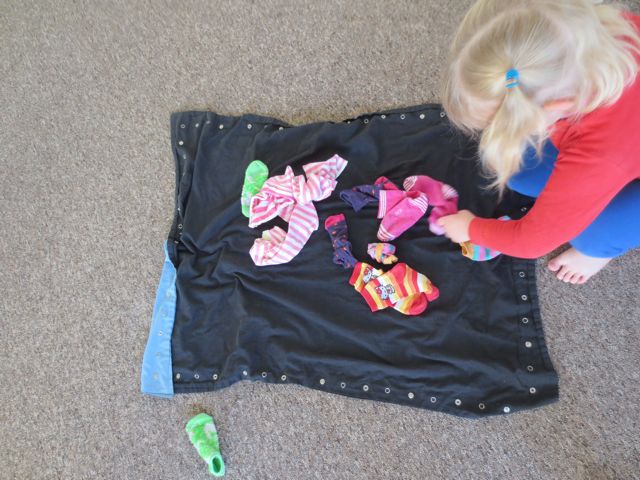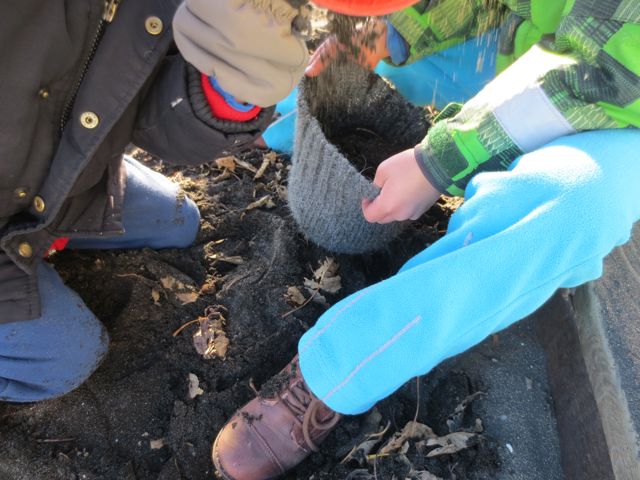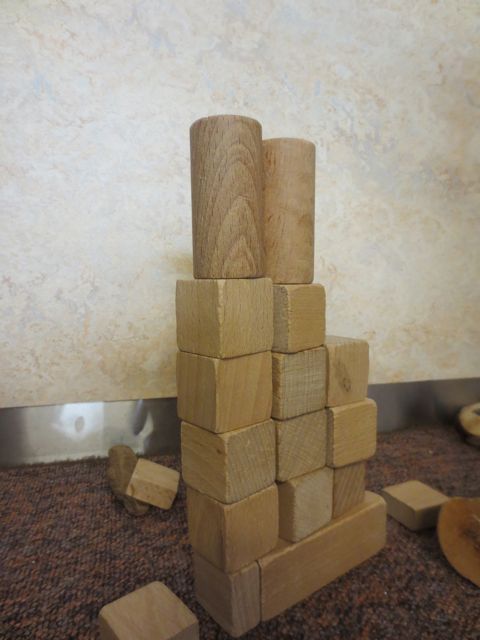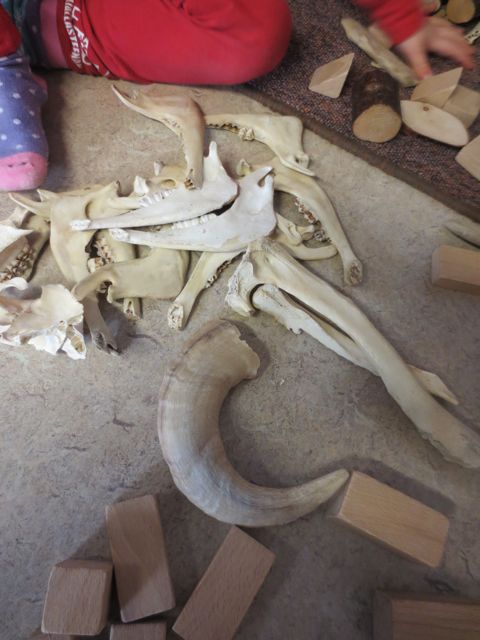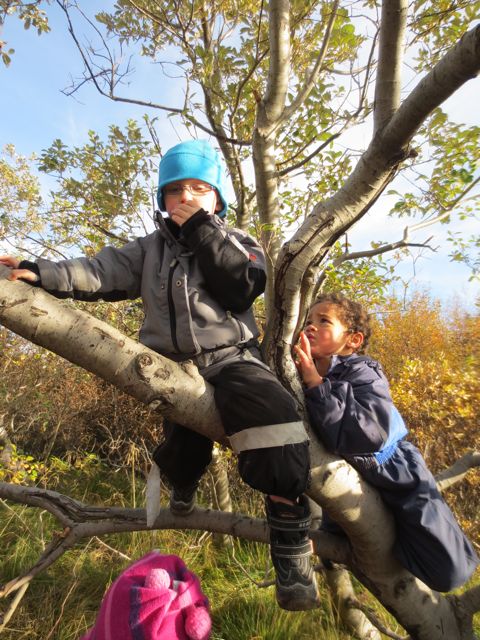Materials #playiceland
Materials are a focal point in our schools and childcare centers 'round here. Discussion groups, blogs, and pinterest pages are devoted to 'stuff'. "All natural!" some pages shout and "No plastics!" give evidence for whole philosophical approaches. Lately, prospective parents visiting our school during open house tours want to know what kind of materials we offer the children. I know I spend A LOT of time looking for stuff. I am particular about what I collect or buy. Andrea is too and we are fortunate to have an entire basement to store our collections. And the basement is filled. This is not an exaggeration. It is filled.
That said, I know that some of it is not essential. I actually have a list of essentials and most of these can be found just around and are free. That means the rest is simply icing on the cake. Could I make do without all of it? What are your essentials?
I saw three patterns that kept repeating during the Iceland school tours. The first centered on environment. In The House, I talked about the way the schools and their spaces were designed. In the post, Independence, I found that a culture that values independent thinking and resiliency gives voice to the shaping of early childhood programs. We saw some very different programs and philosophies, but all seemed to take on, at their core, independent thinking and resiliency as guiding principals. In thinking about the materials that were offered in the classrooms, I found that these perfectly reflected the design, or rather, designation of space as well as the intention to nurture independent thinking and resiliency. It was not through MORE stuff, it was with what could be seen as essentials.
This hit me like a ton of bricks -- or better, a ton of hollow blocks -- at our first school tour at a Hjalli model school, I felt compelled to open doors and to look in cabinets. I actually felt a certain degree of panic. Where was the stuff? Our tour guide, the principal of the school, patiently allowed me to open one of the doors to find their collection of upholstered blocks stacked up in a window.
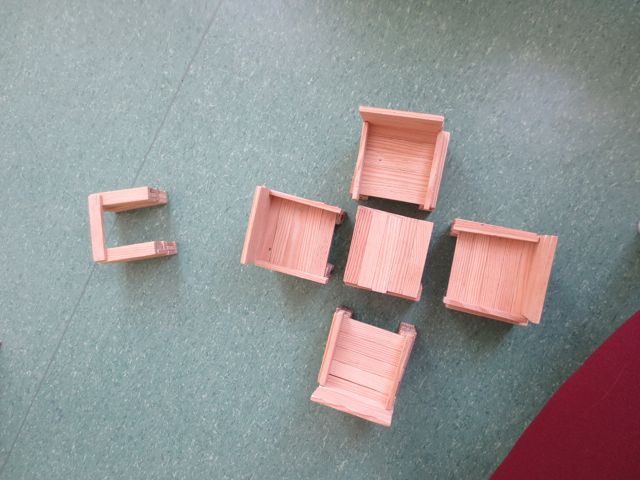
Each room featured a different kind of material, but single-focus material. A room for hollow blocks. A room for unit blocks. A room for the upholstered blocks. Then a room which featured drawing, play dough (clay), and water table. This was jarring, but challenged me to think differently. Could I get out of my head, out of my way of thinking, and see what was in front of me?
The first thing that helped me was watching a planned, and teacher-led, lesson that featured children climbing out a window, barefoot, from one room and then along strategically placed chairs along the outside of the school to climb back in a window in another room. This is a very interesting, feet and hands-on way to experience architecture, counting, and then once they climbed into the room, they had to find their own pair of socks from a collection piled up on a fafu poppy.
We all know that imaginary play only needs an idea. Dress-ups, plates, pots and pans, etc. are non-essential, children will make do with dirt and sticks. Inside, I saw two drawings take shape. One was a map and the other was more of a story illustration of a pirate on a ship. I realized that these two boys had a plan. Once outside, they put the plan into action and a whole group of boys were involved (note: the Hjalli-model schools are gender-divided). Treasure hunting manifests the same the world over, I suppose. What was interesting is that although there were buckets available, some agreement between them led them to use their hats to collect the treasure. The treasure was the black lava sand that filled the sand pit and play area. So now take buckets off the essential list.
While the basics were always evident in the two Hjalli-model schools we visited, they also have a system of introducing "special materials" over time. At one we saw sheep jaw bones and horns collected following an annual tradition. At the other, we saw hoops and cones, all materials very familiar to us here in the States, as well as fine motor manipulatives.
While the other three schools were different from the Hjalli-model schools, there was a shared simplicity, a commitment to the essentials -- how far could a child's imagination take him or her?
The answer is, "Very far."
At Stekkjarás, we met the children in the forest. They spend one day a week out in the great, wide world and what do they need? It is not bought, it is not brought in, it is simply there. Not all of it is natural, some of it is left by humans. These things become part of the draw and also a source of discussion, "Who left this?" and "What shall it mean to us?" Mostly, though, this becomes a place all their own, with things they are the first -- in the great, wide world -- to discover. Over and over again. And all they need to do is walk outside.
There is also an inside at Stekkjarás. It is a Reggio-inspired school that embraces full body movement and, again, independence in thought and pursuit. Here we saw the rooms of hollow blocks, unit blocks, upholstered blocks, and while there was seemingly more stuff, it still looked and felt like a lot of time and thought went into selecting the essentials that would leave room for open-ended play.
At the last school we toured, the Alfaborg playschool which is also a Reggio-inspired school, we saw how children could pull together to make an imagined world soar -- in their own way using materials that were child-sourced. The children were exploring (and had been for several months) birds and from this, they discovered Peter and the Wolf. They worked together to make the world Peter inhabits their own and then staged the show for all to enjoy.
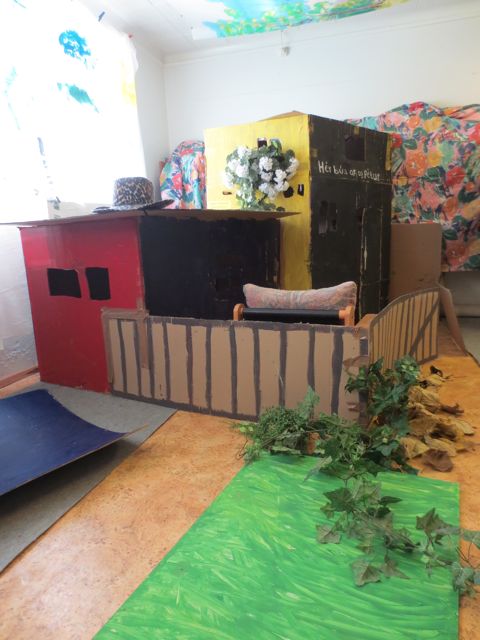
Long story, short, I was able to step outside my mindset and find common ground. Now, I won't be giving up my filled shelves anytime soon and our walls will not be painted white and the artwork will continue to be displayed just so. We will also continue to hold dear the ability to offer the children who attend our little school the opportunity to take risks and find adventure both indoors and out. We will pursue art, dramatic play, and outdoor adventure as we do. All these things and activities also nurture independence and resiliency. And that is perfect. For us. The important part of this story is that there is more than one way to build the experience of early childhood and more than one way to nurture independence and resiliency.
And that is the beautiful part of this story.



